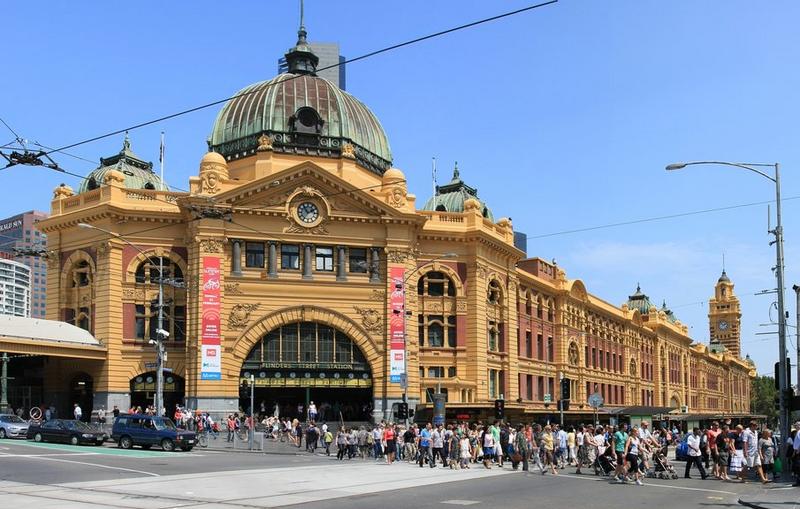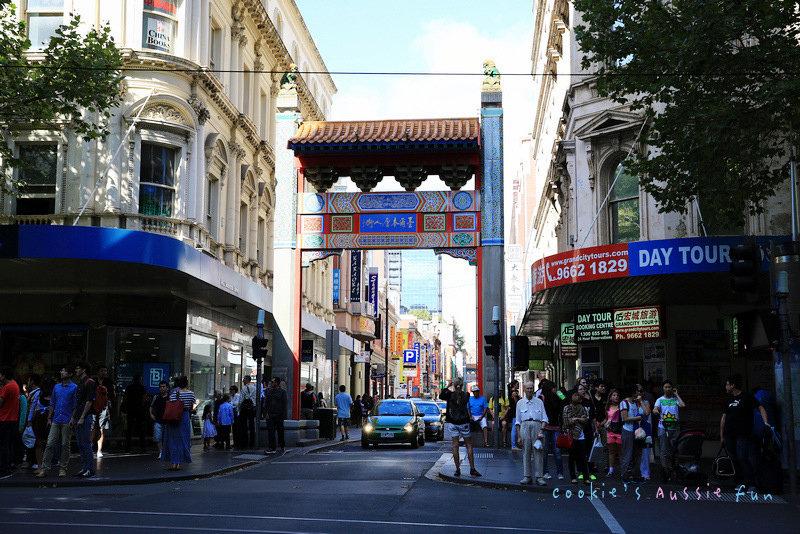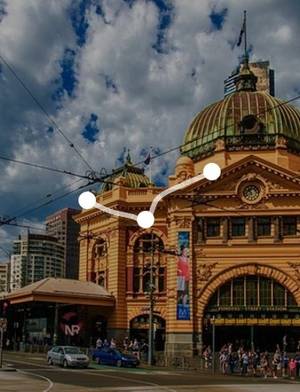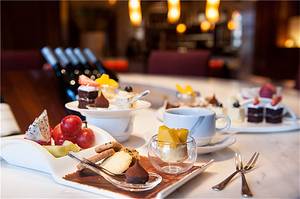Three days in Melbourne: city culture, nature, animal parks
1 cities |
12 attraction(s) |
total distance 436
km
 TIPS
TIPS
Day1
Day2
Day3
Day1: Melbourne
5 attraction(s) ·
6 km
1
Flinders Street Station is one of Melbourne's largest and busiest train stations, as well as one of the buildings left behind from the Victorian era. As the first railway station in Melbourne, it serves as the central station for local railway lines. Its grand architectural style is very attractive and easily recognizable. Located in the city center, the station's unique location facing Federation Square and St. Paul's Church has become one of Melbourne's most important cultural centers. The entire station is built with yellow stone, and the bronze dome is one of its greatest features. When night falls, the station is illuminated by dim yellow lights and looks especially beautiful. As far as the eye can see, the magnificent buildings give people a peaceful and beautiful feeling. Melbourne residents often meet under the station's clock, which has become an important part of their lives. To experience the charm of Flinders Street Station, it is recommended to visit at night when you will surely be amazed by its unique classical beauty.
1
km
2
Fed Square is located in the center of Melbourne, Australia. It covers an area of 3.2 hectares and is adjacent to the Yarra River. The unique architectural style exudes the charm of Australian Aboriginal culture. The square is a holy place for people to gather, and the tourist center is a focus. Various celebratory events are held here every year, including New Year's countdowns and live sports broadcasts. The history of the square can be traced back to the 1960s. After a large-scale reconstruction, it was put into use in 2002 as a mixed-use multi-functional place with 16 cafes, bars and restaurants, various shops, and tourist service centers. There are many attractions around the square, such as the Ian Potter Center, the Australian Centre for the Moving Image, the National Gallery of Victoria Children's Play area, and the Australian Commercial Art galleries Association, etc. Tourists can spend unforgettable time here. The Melbourne Visitor Center provides thoughtful services for tourists to understand tourism information in Melbourne and Victoria. Fed Square is a vibrant and culturally rich place that is worth visiting.
1
km
3
Public gallery with vast, varied collection of noted Australian and international art and artefacts.
2
km
4
36-hectare botanic garden founded in 1846, planted with Australian species and non-native gardens.
4
km
5
This market, which began in the mid-19th century, has now become the largest open-air market in Australia and even in the southern hemisphere. Here you can find everything, whether it's seafood, fresh meat, vegetables, fruits, or clothing, shoes, souvenirs, etc. If you can make it in time, you can also take advantage of the discounts on fresh fruits, vegetables, and meat before the market closes, and get them at affordable prices. The food night market on Wednesday nights is not to be missed. The night market in 2014 is from July 9th to August 26th, and every Wednesday night from November 5th to March 25th the following year, from 17:00 to 22:00. The night market not only has delicious food, but also bars, clothing, art and other goods, and there are live band performances, which are definitely worth a visit.
Day2: Melbourne
3 attraction(s) ·
232 km
3
The Great Ocean Road is a travel route that stretches nearly 250 kilometers west of Melbourne, Australia. The route crosses through pristine beaches, picturesque towns, stunning mountains, and rainforests, making it an unforgettable journey filled with beautiful scenery and historic significance. The eastern portion of the Great Ocean Road winds through the Otway Mountains, where lush forests and farmland thrive. Traveling along the coast from Melbourne to the endpoint takes approximately four hours, while taking an inland highway can save you over an hour, but you'll miss out on many breathtaking coastal views. Towns along the way include Geelong, Torquay, Apollo Bay, and Port Campbell. One of the most famous attractions along the route is the Twelve Apostles, but due to the high number of tourists, it's recommended that those driving stay overnight in Port Campbell and head there early in the morning to avoid crowds. You can also continue westward from Port Campbell to explore the town of Warrnambool and its many beautiful, unique sights that are less crowded. Our suggestion is to stay overnight in Warrnambool for a leisurely holiday, where you can find great deals like "a 300 square meter new villa with garage for only 700 yuan" and enjoy the comfort and tranquility.
Day3: Melbourne
4 attraction(s) ·
8 km
1
The Melbourne Museum, located in the north of Melbourne's city center, is the largest museum in the southern hemisphere and one of Melbourne's must-see attractions. The museum has a large collection of exhibits, including 17 million items, showcasing Australian history, indigenous culture, and scientific development. It is adjacent to the Royal Exhibition Building and Carlton Gardens, and comes with the world's largest IMAX cinema.
The Melbourne Museum has three major functions. Firstly, the IMAX cinema, which is the world's largest cinema format, with a screen up to eight levels high, where audiences can enjoy documentaries and the latest films, all of which can be shown in 2D or 3D. Secondly, the Bunjilaka Indigenous Cultural Centre, which is a space for Aboriginal and non-Aboriginal people to learn about the culture of the Koorie people of Victoria (south-eastern indigenous peoples), showcasing arts, artefacts, stories, and performances. Finally, there are permanent exhibitions, including the Dynamic Earth, the Evolution of Victoria over 6 million years, the Sam Kookaburra, the Wonders of Wildlife, the Dinosaur Walk, Memory and Dreams, the Insectarium, Our Seas Our Future, the Miracle and Charm of the Human Body, Smart Home Water, Another Australian Computer, Secrets of the Forest, Children's Area (How Plants, Animals, Minerals, and Humans Grow), DNA Exploration and Mechanisms, and Pharmacy, as well as an outdoor "Colonial Square."
3
km
2
In Australian tourism, getting close to animals is a major highlight. You can enter the enclosures of emus and kangaroos to get closer to them; you can also watch sea lions and penguins swim gracefully underwater; if you're lucky, you can even observe polar bears up close through glass. In addition, the park's green environment has its own unique flavor, with various birds freely roaming on the lawns, including peacocks, as if they had escaped from their cages.
5
km
3
The Yarra River, located in the center of Melbourne, is a popular tourist and leisure destination. In the evening, you can stroll along the riverbank and enjoy the beautiful scenery of Melbourne at night. Take a rest in the restaurants and bars along the way and experience the comfort of food and drink. At the same time, the buildings on both sides of the river have different architectural styles, which bring you different visual impacts. The Yarra River is a great place to make you happy, and it is also an excellent place to taste the cultural charm of Melbourne.
1
km
4
Located in the center of Melbourne, Australia, Chinatown refers to an area between Swanston and Exhibition streets on Little Bourke Street, with the liveliest section between Swanston and Russell. There are numerous Chinese restaurants and shops, and the staff generally speak Mandarin and Cantonese, making it easy for tourists to shop and ask for help.
Chinatown offers a wide variety of goods, including many Australian specialties such as sheepskin and lanolin. When shopping, visitors should remember to bargain moderately. The roads in Chinatown are one-way, allowing only vehicles to travel from east to west. Pedestrians are free to walk, but should be careful of traffic. During major festivals such as the Spring Festival and Mid-Autumn Festival, Chinatown becomes a pedestrian-only street, with vehicles prohibited from entering.































